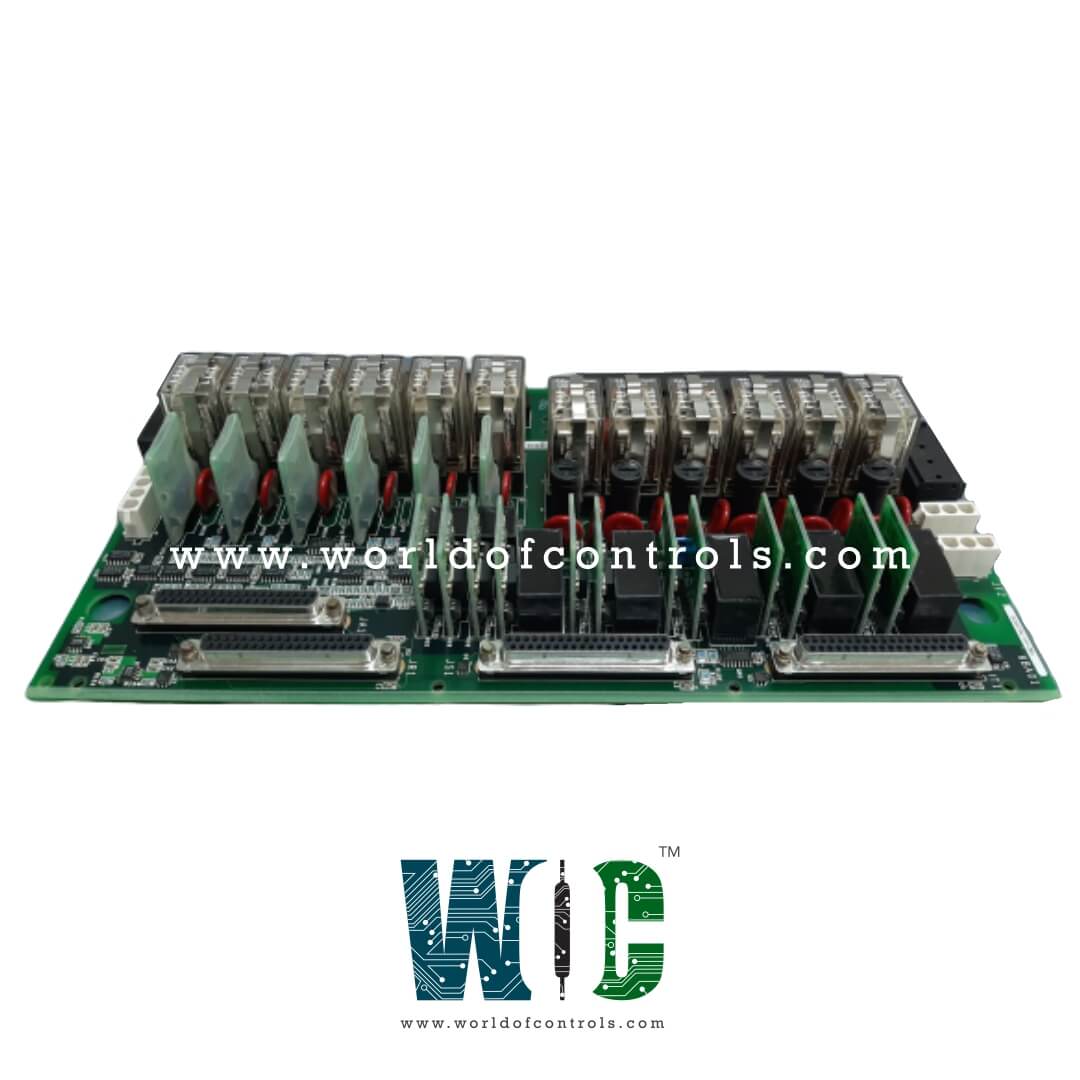
World Of Controls understands the criticality of your requirement and works towards reducing the lead time as much as possible.
IS200TRLYH1CBA - Relay Output Terminal Board is available in stock which ships the same day.
IS200TRLYH1CBA - Relay Output Terminal Board comes in UNUSED as well as REBUILT condition.
To avail our best deals for IS200TRLYH1CBA - Relay Output Terminal Board, contact us and we will get back to you within 24 hours.
SPECIFICATIONS:
Part Number: IS200TRLYH1CBA
Manufacturer: General Electric
Series: Mark VI
Number of output relay channels: 12
Product Type: Relay Output Terminal Board
Maximum Load Current: 24 V dc
Technology: Surface Mount
Size: 17.8 cm wide x 33.02 cm high
Temperature: -30 to 65ºC
Repair: 3-7 Days
Weight: 2.00 lbs
Country of Origin: USA
Availability: In Stock
Manual: GEI-100863
FUNCTIONAL DESCRIPTION:
IS200TRLYH1CBA is a Relay Output Terminal Board manufactured and designed by General Electric as part of the Mark VI Series used in GE Speedtronic turbine control systems. TRLYH1B holds 12 plug-in magnetic relays. The first six relay circuits can be configured via jumpers for dry Form-C contact outputs or to drive external solenoids. A standard power source of 125 V DC or 115/230 V AC, or an optional 24 V DC source, can be used for solenoid power, with jumper-selectable fuses and onboard suppression available for each circuit. Relays 7 through 11 provide unpowered, isolated Form-C contacts. Relay 12, an isolated Form-C contact, is designated for specialized functions such as controlling ignition transformers. The TRLY board is managed by either the VCCC or VCRC boards in Mark VI systems. Cables with molded connectors link the terminal board to the VME rack, where the I/O boards are housed. Both simplex and Triple Modular Redundant (TMR) systems are supported, with plug JA1 used for simplex configurations, and JR1, JS1, and JT1 used for TMR setups.
INSTALLATION:
The 12 relay outputs are directly connected to two I/O terminal blocks on the terminal board, as illustrated in the figure. Each block, secured by two screws, has 24 terminals that can accommodate wires up to #12 AWG. On the left side of each terminal block, a shield terminal strip is attached to the chassis ground. Solenoid power for outputs 1-6 typically connects through JF1, while JF2 can be used to daisy chain power to additional TRLY boards. Alternatively, if power is not supplied through JF1 or JF2, customer power can be wired directly into TB3. Power for the special solenoid (Output 12) is provided via JG1.
OPERATION:
The relay drivers, fuses, and jumpers are located on the relay terminal board. For simplex configurations, D-type connectors transmit control signals and monitor feedback voltages between the I/O processors and the TRLY via JA1. The relays, rated at 3.0 A, operate at the system’s frame rate. The contact voltage is rated at 500 V AC for one minute, while the coil-to-contact voltage is rated at 1,500 V AC for one minute. Typical relay operation time is 10 ms. Relays 1-6 include a 250 V MOV for transient suppression between the normally open and power return terminals. In the event of a disconnected cable or loss of communication with the I/O processor, failsafe mechanisms de-energize the corresponding relays to ensure safety.
WOC holds the largest inventory of GE Speedtronic control system replacement parts. We also offer repair services for faulty boards and supply both new and refurbished boards, all backed by a warranty. Our expert team is available 24/7 to support your OEM requirements. For inquiries about pricing and availability of parts or repair services, please reach out to our team via phone or email. We’re here to assist with all your automation needs.
What is a Relay Output Terminal Board?
A Relay Output Terminal Board is a component used in turbine control systems to provide relay outputs for controlling external devices such as motors, valves, and alarms.
What types of relay configurations are supported?
The first six relay outputs can be configured as dry, Form-C contact outputs, or used to drive external solenoids. The remaining relays (7-12) provide isolated Form-C contacts for different applications.
What is the power source for the solenoid relays?
Standard power sources include 125 V DC or 115/230 V AC, with an optional 24 V DC available. Power can be supplied via jumpers or wired directly to the terminal board.